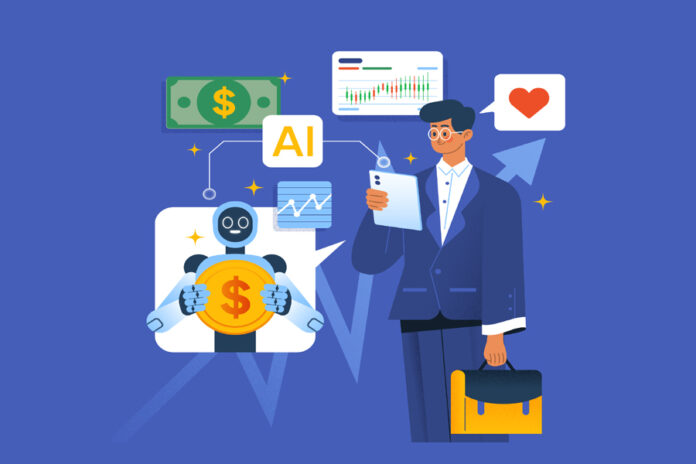Embracing the AI Economy and Future Jobs
Imagine logging into work one morning only to find an AI assistant has already drafted your day’s to-do list, summarized your reports, and even flagged critical insights. Welcome to the AI economy, a transformative era where automation isn’t just a threat, it’s a partner in unlocking human potential. In 2025, AI economy, future jobs, and automation aren’t buzzwords but the pillars of a rapidly evolving job market. As someone who began my career manually sorting data spreadsheets, witnessing AI streamline complex tasks has been eye-opening. But beyond personal convenience, this shift demands we rethink skills, education, and the very nature of work.
AI Economy: Growth, Productivity, and Job Creation
The AI economy is projected to add up to $19.9 trillion to global GDP by 2030, driven by productivity gains and the automation of cognitive tasks. Far from a zero-sum game, automation can complement human workers by handling repetitive tasks, allowing professionals to focus on strategic, creative, and interpersonal responsibilities. For example, financial institutions implementing AI-powered assistants report double-digit improvements in report generation speeds without reducing headcount, instead upskilling employees to manage and interpret AI outputs.
Comparative Outlook: Job Displacement vs. Job Emergence
Below is a snapshot comparison of projected job losses against new roles emerging through AI and automation:
| Category | Jobs Displaced | Roles Emerging | Net Gain/Loss |
| Global by 2030 | 92 million jobs | 170 million new roles | +78 million |
| Highly Automatable Roles (2040) | Up to 40% of programming | Prompt engineers, AI ethics stewards | Net positive (complement effect 50% larger than substitution) |
| Financial Services (5-year) | Up to 200 k back-office | AI oversight and strategy analysts | Shift toward higher-value tasks |
This table underscores that while automation will remove certain tasks, it simultaneously catalyzes the creation of new, often higher-skilled positions.
Key Insight 1: Upskilling for Adaptability
A PwC survey of nearly 1 billion job ads reveals that industries most exposed to AI now offer wage increases twice as fast as those least exposed. This signals employers’ willingness to pay premiums for AI-literate talent. Yet, as automation accelerates, continuous learning becomes non-negotiable. In my team, we’ve adopted monthly “AI hackathons” where employees experiment with new tools, boosting both competence and confidence. Employers, in turn, must invest in on-the-job training, micro-credentials, and partnerships with educational platforms to keep pace with evolving demands.
Key Insight 2: Human-AI Collaboration Over Replacement
Contrary to dystopian visions, 69% of tech leaders plan to expand their teams thanks to generative AI, viewing it as an enabler rather than a replacer. Roles blending technical know-how with “soft” competencies, like emotional intelligence, critical thinking, and communication, are surging. Consider cybersecurity: AI can flag anomalies at machine speed, but human analysts contextualize threats and make judgment calls. This symbiosis elevates job quality and playbooks new career paths: AI trainers, explainability specialists, and trust auditors who ensure algorithms act ethically.
Key Insight 3: Education’s Urgent Evolution
Universities worldwide face a reckoning: traditional curricula struggle to match the pace of AI innovation. A PwC global survey found declining employer preference for formal degrees in AI-related fields, favoring demonstrable skills instead. In response, academic institutions must embed AI literacy across disciplines, engineering, humanities, and business alike, and offer stackable credentials such as certificates in AI ethics, data literacy, and machine learning fundamentals. Students graduating today should not only code but also critique algorithmic bias and design human-centric AI solutions.
Personal Perspective: Navigating the AI Transition
When my department piloted an AI-driven analytics platform, initial skepticism ran high colleagues feared redundancy. I led a small “AI ambassadors” group, hosting brown-bag sessions to demystify the technology. Within months, productivity rose 25%, and morale improved as employees recognized AI as a collaborator. This experience underlines a critical truth: transparent change management and participatory learning foster trust, easing the workforce into the AI economy and safeguarding organizational.
Future Jobs: Emerging Roles in the AI-Driven Era
Based on current trends and expert reports, here are five pioneering roles poised for growth:
- Prompt Engineer: Crafts precise inputs to maximize generative AI outputs.
- AI Ethics Steward: Audits algorithms for fairness, transparency, and compliance.
- Unstructured Data Specialist: Translates raw data (text, audio, video) into actionable insights.
- Automation Liaison: Bridges technical teams and business units to integrate automation solutions.
- Digital Well-being Coach: Guides individuals and organizations on healthy AI-tech usage.
These roles reflect a shift from manual execution toward strategic orchestration of AI capabilities.
Conclusion: Thriving in the AI Economy
As we stand midway through 2025, the AI economy and automation are reshaping future jobs at an unprecedented pace. Displacement fears, while valid, are balanced by significant net job gains, wage growth in AI-exposed sectors, and a surge in human-centric, AI-adjacent careers. Success hinges on adaptability: workers must embrace lifelong learning, employers must foster inclusive upskilling programs, and educational institutions must reform curricula for real-world AI fluency. By prioritizing collaboration over competition with machines, we can harness AI’s power to create a more innovative, equitable, and resilient global workforce.
Table of Key Takeaways
| Insight | Actionable Step |
| Upskilling Demand | Launch regular AI workshops and micro-credentialing |
| Human-AI Synergy | Establish cross-functional “AI ambassador” teams |
| Education Reform | Integrate AI literacy and ethics across curricula |
| Emerging Roles | Map career paths for prompt engineers and ethics stewards |
| Trust & Culture | Implement transparent change-management frameworks |

